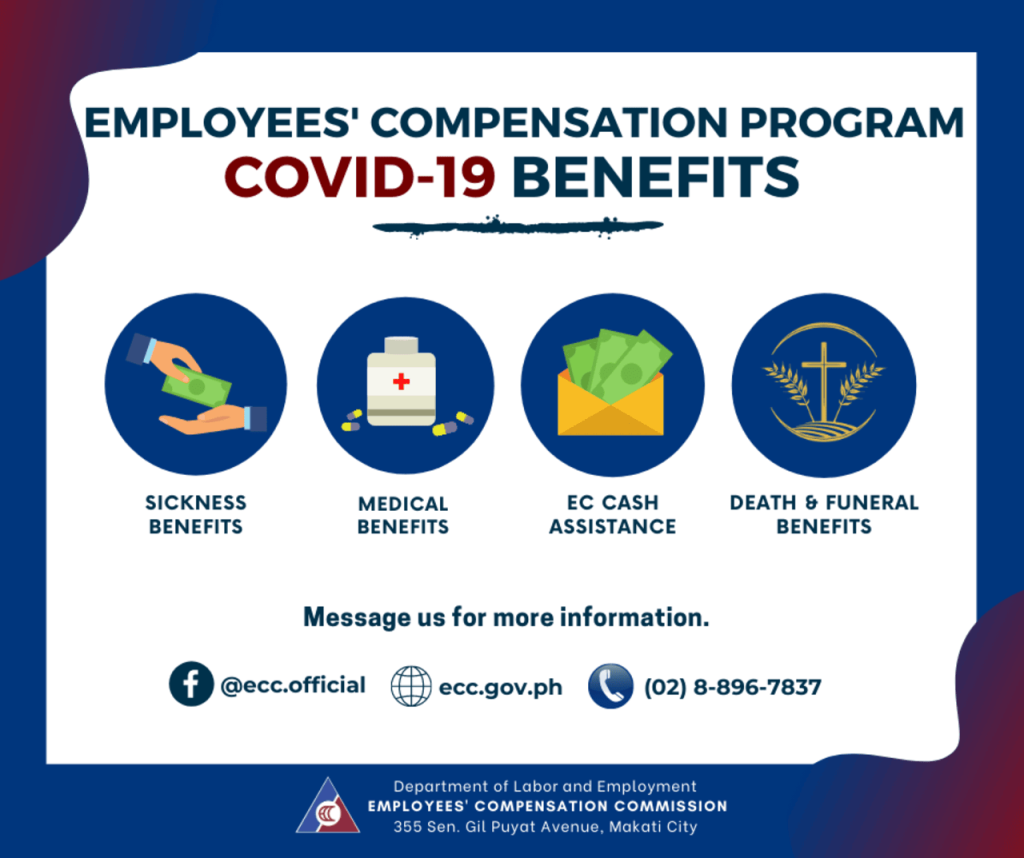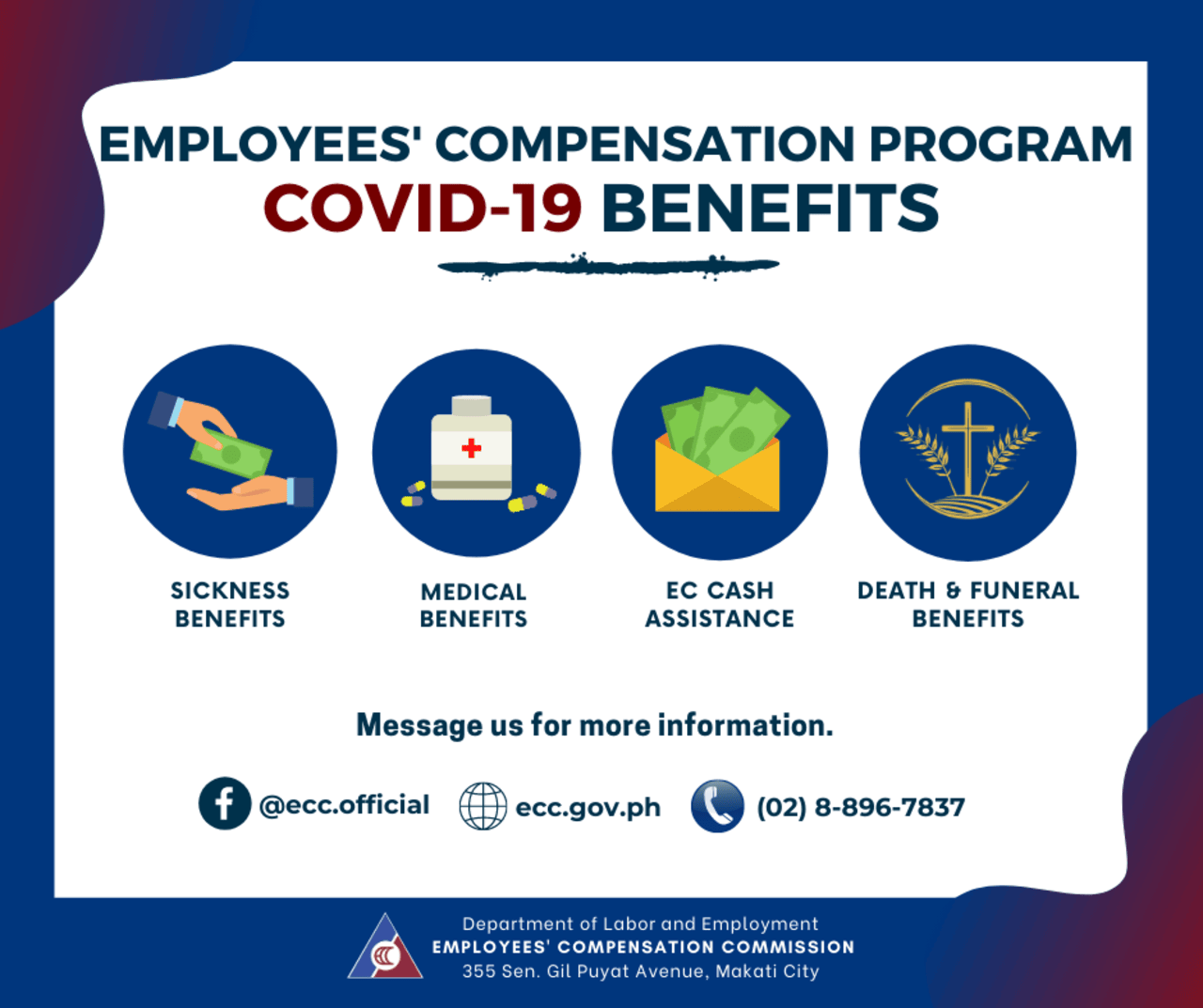The Government Service Insurance System (GSIS) provides financial assistance to government employees and their beneficiaries under the Employees’ Compensation Program (ECP). It offers compensation for work-related injuries, illnesses, or death. The GSIS Employees’ Compensation Claim (ECC) ensures that government workers are supported in times of unforeseen occupational risks.
Understanding how to apply for GSIS ECC is important to help employees and their dependents avail themselves of the benefits they are entitled to. This guide will explain eligibility, the requirements, and the application process to make the process easier and more accessible for applicants.
Program Overview
The GSIS Employees’ Compensation (EC) program is a government-mandated benefit system designed to provide financial assistance and services to employees who suffer work-related injuries, illnesses, or death. Established under Presidential Decree 626, the program complements workers’ compensation benefits by offering medical services, cash benefits, and rehabilitation programs to both public and private sector employees, ensuring that the employees and their families are supported during unforeseen events caused by occupational risks.
The legal basis of the EC program stems from the Labor Code of the Philippines, emphasizing the government’s commitment to social justice and workers’ welfare. Employers pay the full contribution for the Employees’ Compensation Fund (ECF), and the benefits cover permanent and temporary disability, medical reimbursements, and death benefits, with the program benefits extending to all GSIS-registered employees including uniformed personnel of the Armed Forces of the Philippines (AFP), Philippine National Police (PNP), Bureau of Jail Management and Penology (BJMP), Bureau of Fire Protection (BFP), and elective officials earning regular salaries. Recent updates have streamlined claims processing, including options for filing via electronic mail and postal services, and have introduced extended evaluation periods for COVID-19-related claims, as well as changes in the amount of cash aid offered to the beneficiaries, reflecting its adaptability to current challenges.
Benefits

The program offers a range of benefits to address different situations in cases of work-related contingencies:
- Daily Sickness Benefit Allowance: ₱200 per day for temporary total disability or injury.
- Permanent Partial or Total Disability Benefit: Lump-sum or monthly pension, depending on the degree of disability and contributions made.
- A 10% increase in EC pensions was implemented for permanent partial disability and permanent total disability in the private sector.
- Carer’s allowance is also provided for eligible pensioners.
- Medical Services, Appliances, and Rehabilitation: Covers reasonable expenses for work-related injuries or illnesses.
- Covers medical services, appliances, and supplies necessary for treatment.
- Provides rehabilitation services to help the employee recover and return to work.
- Death Benefits: A monthly pension of ₱3,000, depending on eligibility.
- The death benefit is paid to the primary or secondary beneficiaries.
- Survivorship Pension
- Dependents of deceased members may receive a monthly survivorship pension.
- A 10% increase in EC pensions was implemented for survivorship pensions in the private sector.
- Funeral Benefit: ₱30,000 for funeral expenses of a deceased employee.
- Under Executive Orders No. 167 (2014) and No. 33 (2017), the funeral benefit was raised from ₱10,000 to ₱30,000.
These benefits aim to mitigate the financial impact of work-related health issues and safeguard the welfare of government employees and their families.
Target Beneficiaries
It was designed to assist specific groups including the following:
- Government employees: All active members of GSIS employed in the public sector.
- Surviving dependents: Legal spouse, minor children, or designated beneficiaries of deceased government workers.
- Disabled workers: Individuals suffering from temporary or permanent work-related disabilities.
- Injured workers: Employees requiring medical care, rehabilitation, or prosthetic support due to workplace injuries.
- Retired employees: Former government workers entitled to benefits for prior work-related conditions under the program.
Note: For death and funeral benefits, the beneficiaries can include the legitimate spouse, dependent children under 21 years old, or incapacitated dependents. If no primary beneficiaries exist, secondary dependents such as parents or legitimate descendants may claim the benefits.
Eligibility Requirements
To qualify for GSIS ECP under PD 626, applicants must meet the following conditions:
- The injury or sickness must be work-related or arise from the course of employment.
- The illness should either be listed as an occupational disease or proven to be caused by the employee’s working conditions.
- Death or disability must be directly caused by work-related injury or sickness.
Do note that claims will not be processed if the incident is due to:
- Intoxication or drunkenness.
- Willful intent to harm oneself or others.
- Notorious negligence.
- Non-work-related circumstances.
Common Work-Related Illnesses Covered
PD 626 specifies a range of occupational diseases eligible for compensation. Some of these include:
- Cardiovascular diseases and cerebrovascular accidents.
- Pulmonary tuberculosis, pneumonia, and peptic ulcers.
- Occupational asthma and musculoskeletal disorders.
- Cancer types linked to workplace exposure (e.g., lung, liver, and brain cancers).
- COVID-19 and other infections acquired through job-related activities.
If the sickness is not on the official list, employees must provide evidence that their work environment increased the risk of developing the illness.
Requirements
Each type of claim has specific requirements, including the following:
For Sickness Claims:
- Completed income or hospitalization benefit forms.
- Medical certificates and hospital records.
- Service record with a certification of sick leave.
For COVID-19 Cases:
- RT-PCR test results or antigen test results.
- Employer certification of leave dates and risk exposure.
- Quarantine certificates if applicable.
For Injury Claims:
- Certification detailing the circumstances of the accident.
- Witness affidavits and police reports if necessary.
For Death Claims:
- Death certificate, marriage contract, and birth certificates of dependents.
- Affidavit of legal heirs or guardianship form.
Note: All documents must be original or certified true copies, but make sure to keep duplicates in case the need for one arises.
Application Procedures
To apply, here are the steps to follow:
Filing Disability Claims (PPD, TTD, PTD) in Person
Step 1. Visit the GSIS Office:
Go to the Information Center/Public Assistance and Complaints Desk (PACD) to get a queue number. Wait for your turn to file the application.
Step 2. Submit Documents:
Proceed to the assigned booth or window to submit the completed application form and supporting documents. Sign the tentative computation and receive an acknowledgment receipt.
Step 3. Document Scanning and Routing:
The frontline personnel will scan the submitted documents, attach them to the Transaction Monitoring System (TMS), and forward them to the Claims Unit.
Filing Disability Claims through Electronic Mail (Email)
Step 1. Submit Scanned Documents
- Send the application form and required documents to the designated GSIS email. Ensure the email subject follows this format:
GSIS (Type of Claim)(BP No.)(Last Name)(First Name)(Agency Name).
- Attach a clear photo of the claimant holding the completed form and two valid IDs. File size should not exceed 4MB.
Step 2. Adjudication and Validation:
The submitted documents are reviewed, and the claimant’s identity is validated using GSIS records. Acknowledgment is sent, citing the TMS Reference Number.
Step 3. Attach Documents to TMS:
Documents are attached to the system and routed to the Claims Unit for processing.
Note: Original documents must be submitted within 10 working days of email submission for payment release.
Filing Disability Claims through Postal Mail or Courier
Step 1. Mail Submission:
Send completed application forms and supporting documents via postal service or courier in a sealed brown envelope. Include claimant details (full name, address, contact information).
Step 2. Adjudication and Validation:
Upon receipt, GSIS will evaluate the documents, validate the claimant’s identity using existing records, and log the transaction into TMS.
Step 3. Acknowledgment:
An acknowledgment is sent through email or SMS, citing the TMS Reference Number and stating if the claim is for processing or needs corrections.
Note: Payment will only be released upon receipt of the original documents.
Medical Evaluation for PPD, TTD, or PTD Claims
Upon receipt of the complete applications, PPD, TTD, or PTD claims will require a medical evaluation.
Step 1. Document Assessment:
Claims Unit evaluates the submitted documents and checks eligibility. The case is forwarded to the Membership Department for record updating.
Step 2. Scheduling and Examination:
The medical officer reviews records, schedules a physical exam or home visit, and notifies the claimant.
Step 3. Peer Review and Approval:
Medical officers review the case and prepare a resolution for approval by senior officers.
Note: For COVID-related claims, an additional 20 working days may be required for processing.
Legal Evaluation for Disability Claims (If Needed)
Some claims may require legal evaluation which follows the following procedures:
Step 1. Review by Legal Officer:
The claim is forwarded to the Legal Department for evaluation and endorsement to the Office of the Vice President (OVP).
Step 2. Routing Back to Claims Unit:
After legal review, the claim is sent back to the concerned branch office for further processing.
Final Processing and Payment of Disability Claims
Once the applicable legal and medical evaluation has been completed, the procedures will proceed as follows:
Step 1. Reconciliation and Processing:
Accounts are reconciled, and the claim is processed. Disbursement vouchers are prepared and reviewed.
Step 2. Approval and Posting:
Claims are approved based on the amount and level of authority, then posted in the system.
Step 3. Payment Release:
For members with UMID/eCard accounts, proceeds are credited within 3 banking days. For others, checks are issued within 20 working days.
Where to Secure the Application Form
The application form for the GSIS Employees’ Compensation (EC) Program can be secured at any GSIS branch office or downloaded from the official GSIS website via this link (https://www.gsis.gov.ph/downloads/forms/2021/20210914-ECC-IBCP-HCPI-III.pdf). There are no fees required to obtain the form or file the application. Processing time varies depending on the claim type, typically ranging from 3 days to 20 working days upon submission of complete documents.
Important Tips
Here are some important tips claimants must take note of:
- File Within the Prescribed Period: Claims must be filed within three years from the time the cause of action occurred (ECC Resolution No. 2799, July 25, 1984).
- Prepare Accurate Documentation: Ensure all forms are complete and legible. Submit only authentic and original documents to avoid delays.
- Seek Assistance When Needed: Visit GSIS offices for guidance or consult the GSIS website for additional information.
Summary
The GSIS Employees’ Compensation Claim under PD 626 provides valuable financial support to government employees and their dependents in times of work-related health challenges. By following the structured process for in-person, email, or postal options for submissions, eligible beneficiaries can efficiently file their claims and ensure accurate claim evaluation, medical assessments, and timely payment, allowing them to maximize the assistance and benefits they are entitled to.
